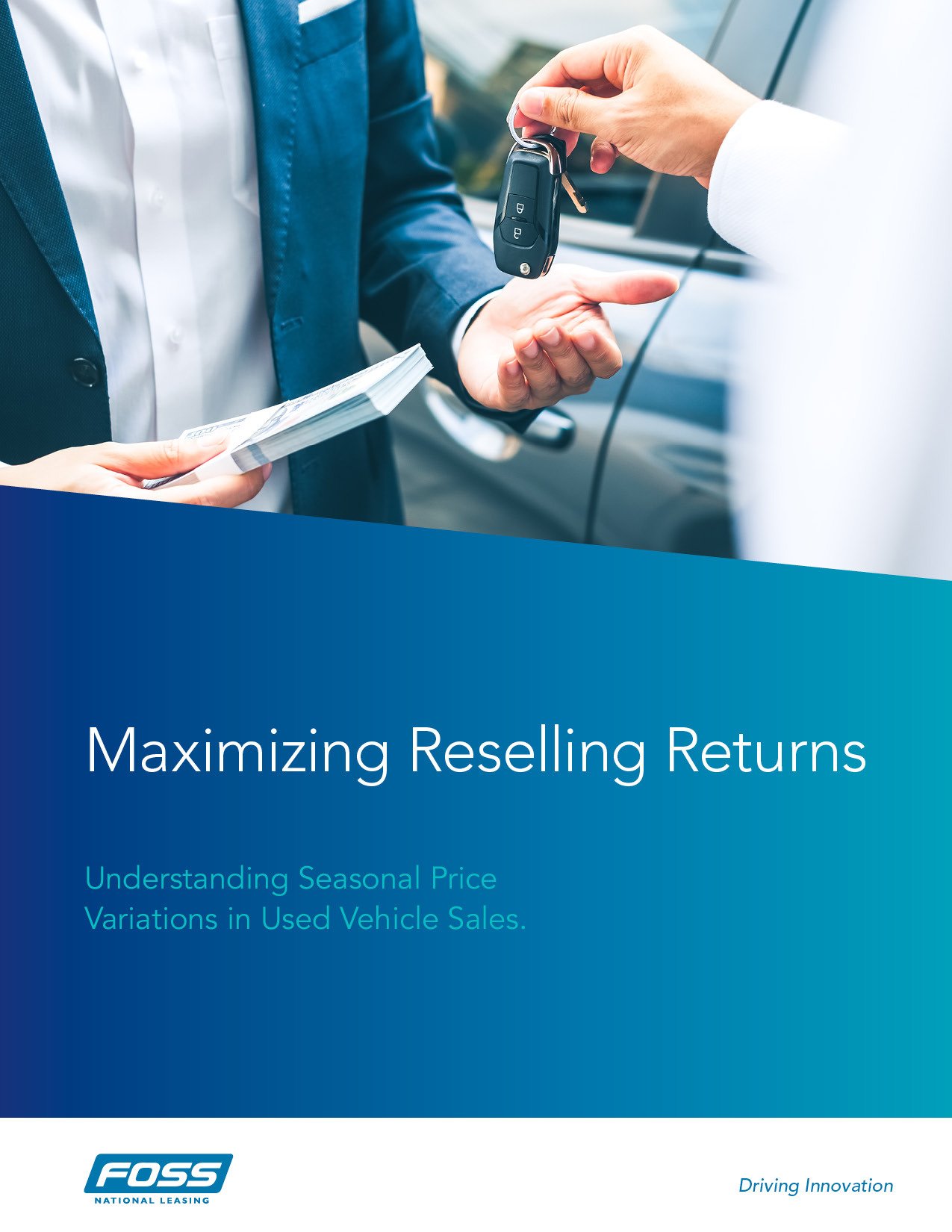
The consideration of open end vs closed end lease is an important one for fleet managers. While neither option is inherently better than the other, you need to choose the best fit for your company.
The key takeaway here is that there are significant differences between the flexibility and risk in both leasing structures. In this comprehensive guide, we'll explore what an open-end lease is, how it differs from a closed-end lease, and why it might be the ideal choice for your organization.
Let's start by looking at the difference between the two types of leasing and dive deeper in each of these types.
|
Feature |
Open-End Lease |
Closed-End Lease |
|
Risk Assumption |
Lessee assumes depreciation risk |
Lessor assumes depreciation risk |
|
Mileage Limits |
No restrictions on mileage |
Mileage limits apply |
|
Payment Structure |
Variable lease payments based on depreciation |
Fixed monthly payments |
|
End-of-Term Options |
Purchase, month-to-month lease, or return |
Return with no obligation |
What is a closed-end lease?
Also known as a “walk away” or “fixed price” lease, a closed-end lease is the best option for organizations looking for minimum risk. The lessor is responsible for any potential gain or loss at the end of the fixed term and the lease agreement limits the allowable mileage and protects the vehicle from excessive wear and tear. Closed-end leases are common in consumer leases, where individuals lease personal vehicles with fixed terms.
What is an open end leasing on a vehicle?
An open-end lease, also known as a “capital lease”, is a rental agreement where the lessee, or the person making periodic lease payments, is responsible for any potential losses or gains associated with the asset's residual value.
An open-end lease combines the flexibility of ownership with the potential cash flow and tax advantages of business vehicle leasing. It may also be referred to as a “finance lease,” “operating lease,” or “TRAC lease.”
With this type of leasing, your business has the option to retain equity in the vehicle while freeing up capital. At the end of the term, you can decide whether to exercise a purchase option, remarket the vehicle at a wholesale vehicle auction, or replace it.
An open-end lease can be risky, however, since the vehicle’s residual value depends on market conditions and the overall condition of the vehicle. The owner will identify the vehicle’s approximate depreciated book value when the lease agreement is made, but this value can fluctuate.
For example, suppose your lease payments for a car are based on the assumption that a $50,000 new car will be worth only $18,000 at the end of your lease agreement. If the car turns out to be worth only $10,000, you must compensate the lessor (the company who leased the car to you) for the lost $8,000 since your lease payment was calculated on the basis of the car having a salvage value of $18,000.
Basically, since you are buying the car, you must bear the loss of that extra depreciation. Conversely, if the car is worth more than $18,000 at the end of the lease, your company receives compensation from the lessor.
With a closed-end lease, or “walk away” lease, you are not responsible for the vehicle’s end value. However, you may be held responsible for the condition of the vehicle (meaning any excessive wear and tear) and the mileage.
Choosing the right type of agreement is essential for the efficiency of your fleet.
Which type of fleet vehicle leasing should you choose?
As you evaluate the difference between an open end vs closed end lease, keep these considerations in mind:
1. How risk-averse is your organization?
Is your business comfortable taking on risk? If it is, an open-end lease may be a better option. In an open-end lease, your business assumes all the risk, but you also stand to benefit from all the financial gains at auction if a vehicle sells for more than the agreed-upon residual value. However, should the actual vehicle usage end up being substantially more than the original estimate, your company will be responsible for any value loss.
For example, if your business signs an open-end lease and expects the vehicle to do 120,000 km over four years, but it ends up doing 150,000 km over that time, you bear the risk from this additional usage when it comes to value depreciation.
You also need to be aware of other factors that can impact value, such as interest rates, seasonal fluctuations, and economic volatility. Traditionally auction value peaks in the spring and fall.
A closed-end lease shifts the risk to the vehicle management company. Assuming you return the vehicle in good condition, you can simply walk away at the end of the leasing term. But with this option, you have less opportunity for gains when it comes time to sell. If the vehicle sells the vehicle for more than the residual value, your company receives compensation for the difference.

2. How much flexibility does your business need?
With a closed-end lease, your business will have very little flexibility. A typical closed-end lease covers a 36-month period at 30,000 km per year for a total of 90,000 km over the life of the lease.
If after three years, the vehicle has gone over 90,000 km, then your business will pay a fee for the excess mileage. This fee is usually between 10 to 20 cents per excess kilometer, as specified in the leasing terms.
Conversely, if after three years, the vehicle has only covered 60,000 km, you’ll still need to return it. You will not receive any credit for the mileage difference.
Another flexibility consideration is the number of vehicles you’ll need to lease. For example, let’s say your business has to let go of five fleet drivers one year into a closed-end lease term. Your business will still need to pay for the remaining two years on the vehicles’ leases, even if the vehicles themselves are no longer being used. If your organization is smaller, and you know you’ll always be in the 50-unit range, closed-end leases are likely the best choice for you.
In contrast, an open-end lease offers unparalleled flexibility for businesses that need to scale their fleet up or down depending on operational demands. This is especially beneficial for companies experiencing fluctuating workloads or seasonal changes. For example, after a 12-month open-end lease period ends, you can continue paying on a month-to-month basis until the book value is zero and your organization owns the vehicle.
Final Thoughts
Choosing the best leasing structure really comes down to the needs of your organization. After you evaluate your risk tolerance and need for flexibility, you’ll have a clearer idea about which option to choose. The result of the correct choice is a vehicle fleet that is efficient, profitable, and effective at allowing your service team to keep doing what they do best.
Get to Know the Author
Hussain Dhanani has worked in the fleet management industry for 15+ years. He started working in the industry as a Client Service Representative in 2006 and now enjoys his current role as Regional Director, Western Canada. Hussain has a passion for people and enjoys being able to help companies achieve their fleet management goals. When Hussain is not working, he is most likely planning his next trip to a new country.
Meet our team






